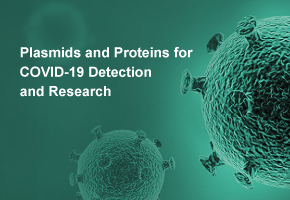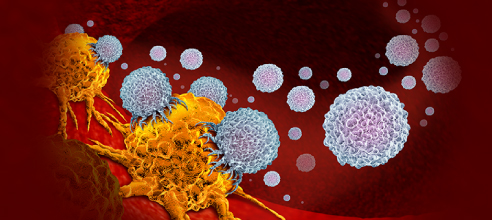How to reduce off-target effects and increase CRISPR editing efficiency?
Although various approaches have been shown to reveal the frequency of off-target mutations by at least an order of magnitude at several sites, it still remains unknown whether these RGEN variants are free of off-target effects in the entire genome. Recently, Digenome-seq, in vitro Cas9-digested whole-genome sequencing, has emerged as a robust, sensitive, unbiased, and cost-effective method for profiling genome-wide off-target effects of programmable nucleases, including Cas9, in human cells. Digenome-seq also consists of a two-stage process.
First, intact genomic DNA was isolated from transfected cells without RGEN and transfected cells with RGEN. Then DNA isolated from RGEN-transfected was digested in vitro with RGEN or not and RGEN transfected cells were digested in vitro with RGEN, both followed by whole-genome sequencing. Second, these digests can produce many DNA fragments with identical 5′ ends, which give rise to sequence reads that are vertically aligned at cleavage sites. In contrast, all other sequence reads would be aligned in a staggered manner. After mapping sequence reads to the reference genome, the authors used the Integrative Genomics Viewer (IGV) to observe patterns of sequence alignments at the on-target and the off-target sites. This method has demonstrated that Cas9 off-target effects can be avoided by replacing “promiscuous” sgRNA gX19 or GX19 sgRNAs with ggX20 sgRNAs (“g” and “G” represent a mismatched guanine and matched guanine, respectively), improving target specificity for gene and cell therapy applications. In addition, off-target effects of dCas9-FokI, paired Cas9 nickases, or other programmable nucleases could be monitored carefully via Digenome-seq to avoid unwanted mutations. Of course, the verification of animal experiments in vivo using Digenome-seq need to be further studied. Although different methods of off-target detection have their own characteristic advantages (), Digenome-seq is currently considered to be the gold standard for validating the specificity of next-generation genome-editing tools.
Various strategies have been reported to reduce RGEN off-target effects. First, the sgRNA sequence can be altered. Truncation of the 3′ end of sgRNA (derived from tracrRNA domain that interacts with Cas9), shortening the region complementary to the target site at the 5′ end of the sgRNA by as many as 3 nt (tru-gRNA) or addition of two guanine nucleotides to the 5′ end of the sgRNA (just before the 20-nt complementary region) improves target specificity, decreasing undesired mutagenesis at some off-target sites by 5,000-fold. Meanwhile, RGENs using these altered sgRNAs also have decreased on-target activity. Efforts toward modifications of sgRNA sequences to enhance the specificity of sgRNAs without compromising on-target efficiency have not provided consistent results. In addition, chromatin accessibility has been reported to be one major determinant of in vivo binding. As Zhang and Sharp reported recently, there are hundreds of thousands of “seed+NGG” sites in the genome, yet <1% are actually bound by dCas9, and most of the matches are in promoters, enhancers and genes. Therefore, when we design sgRNA, we should choose sgRNAs in promoters, enhancers, and genes as far as possible to improve the target cleavage efficiency. However, those sites cleaved by CRISPR/Cas9 system can be both on-target and off-targets sites and we need to balance it according to different experimental purposes.
Second, one potential strategy for minimizing off-target effects is to control the concentration of the Cas9-sgRNA complex by titrating the amount of Cas9 and sgRNA delivered. However, increasing specificity by reducing the amount of transfected DNA also leads to a reduction in on-target cleavage. Therefore, a balance between on-target cleavage efficiency and off-target effects has to be considered. Nonetheless, future optimization of both Cas9 and sgRNA design may improve Cas9 specificity without sacrificing cleavage efficiency.
Third, the wild-type Cas9 nuclease can be replaced with D10 mutant nickase version of Cas9 and paired with two sgRNAs that each cleaves only one strand. Paired nicking strategy substantially reduces the off-target activity by 50–1,500-fold in cell lines and facilitates gene knockout in mouse zygotes without sacrificing on-target cleavage efficiency. This versatile strategy enables a wide variety of genome-editing applications that require high specificity. Additionally, the repair of two nicks generated by double nicking produces 5’ overhangs, leading to the formation of indels much more frequently than 3’ overhang. Comicroinjection of mouse embryos with wild-type Cas9 and sgRNAs induces on-target and off-target mutations that are transmissible to the offspring. Conversely, double nicking can be used in vivo to efficiently mutate single or multiple genes with minimal off-target mutations while preserving on-target cleavage efficiency. There is also an established framework for the optimal design of paired sgRNAs and computational tools for predicting potential off-target sites for sgRNA pairs. The optimal pair of Cas9 sites are in a tail-to-tail orientation, separated by −10 bp to +30 bp, with the sequence 5’-CCN(32–72)GG-3’. This method is applicable for editing the genome of any model organism and minimizes confounding problems of off-target mutations, thereby holds great application potential in clinical gene therapy.
Fourth, to further improve DNA cleavage specificity, fusions of catalytically inactive Cas9 with FokI nuclease domain (fCas9) have been generated, which edits target DNA sites with >140-fold higher specificity than wild-type Cas9 and at least fourfold than that of paired nickases at loci with highly similar off-target sites. This work provides the foundation for the further characterization and improvement of Cas9 specificity and cleavage activity in vitro and in vivo. Recently, tru-RFN with 19 bp half-site complementarity lengths that combines truncated guide RNAs with dimerization-dependent RNA-guided FokI-dCas9 nucleases decreases off-target cleavage by 40% relative to standard RFNs, providing a useful and further improved tool for high-precision genome-editing applications in human cells. We believe that the synergistic use of double nicking and fCas9 offers a promising route for mitigating the effects of off-target CRISPR/Cas9 activity, and may perhaps be a useful approach for exploring therapeutic applications. Recently, a strategy that improves the efficiency of precise genome editing with CRISPR-Cas9 via inhibition of nonhomologous end joining using the inhibitor Scr7 to target DNA ligase IV has also been reported, providing another opportunity to improve the target specificity. Moreover, a simple and effective way to codeliver chemically modified sgRNAs with Cas9 mRNA or protein has been recently described. It is an efficient RNA- or ribonucleoprotein-based delivery method for the CRISPR/Cas9 system, with lower cytotoxicity in primary cells than DNA plasmid-based systems, enabling the expansion and widespread application of this technology.
References
- T Maruyama, SK Dougan, MC Truttmann, AM Bilate, JR Ingram, HL PloeghAumento de la eficiencia de la edición precisa del genoma con CRISPR-Cas9 mediante la inhibición de la unión de extremos no homólogos. Nat Biotechnol, 33 (2015), págs. 538-542.
- JP Guilinger, DB Thompson, DR LiuLa fusión de Cas9 catalíticamente inactiva con nucleasa FokI mejora la especificidad de la modificación del genomaNat Biotechnol, 32 (2014), págs. 577-582SQ Tsai, N Wyvekens, C Khayter, JA Foden, V Thapar, D Reyon, et al. Nucleas diméricas de FokI guiadas por ARN CRISPR para la edición del genoma altamente específico Nat Biotechnol, 32 (2014), págs. 569-576B Shen, W Zhang, J Zhang, J Zhou, J Wang, L Chen, et al.Modificación eficiente del genoma mediante la nickasa CRISPR-Cas9 con efectos mínimos fuera del objetivoNat Methods, 11 (2014), págs. 399-402SW Cho, S Kim, Y Kim, J Kweon, HS Kim, S Bae, et al.Análisis de los efectos fuera del objetivo de las endonucleasas y nicasas guiadas por ARN derivado de CRISPR / CasGenome Res, 24 (2014), págs. 132-141PD Hsu, DA Scott, JA Weinstein, FA Ran, S Konermann, V Agarwala, et al.Especificidad de dirección de ADN de nucleasas Cas9 guiadas por ARNNat Biotechnol, 31 (2013), págs. 827-832.V Pattanayak, S Lin, JP Guilinger, E Ma, JA Doudna, DR LiuEl perfil de alto rendimiento de la escisión del ADN fuera del objetivo revela la especificidad de la nucleasa Cas9 programada por ARNNat Biotechnol, 31 (2013), págs. 839-843.C Kuscu, S Arslan, R Singh, J Thorpe, M AdliEl análisis de todo el genoma revela las características de los sitios fuera del objetivo unidos por la endonucleasa Cas9Nat Biotechnol, 32 (2014), págs. 677-683
About Us · User Accounts and Benefits · Privacy Policy · Management Center · FAQs
© 2025 MolecularCloud





Peculiar methods which you propose, but I admit that they can work. I will apply it very soon and I will inform you how the results are
Excellent article colleague, we need to find and refine more data on CRISP
Thank you for placing the references, so I could corroborate the information and find out more about these methods
Excellent research lady, I like the methods you propose to increase efficiency and reduce off-target effects